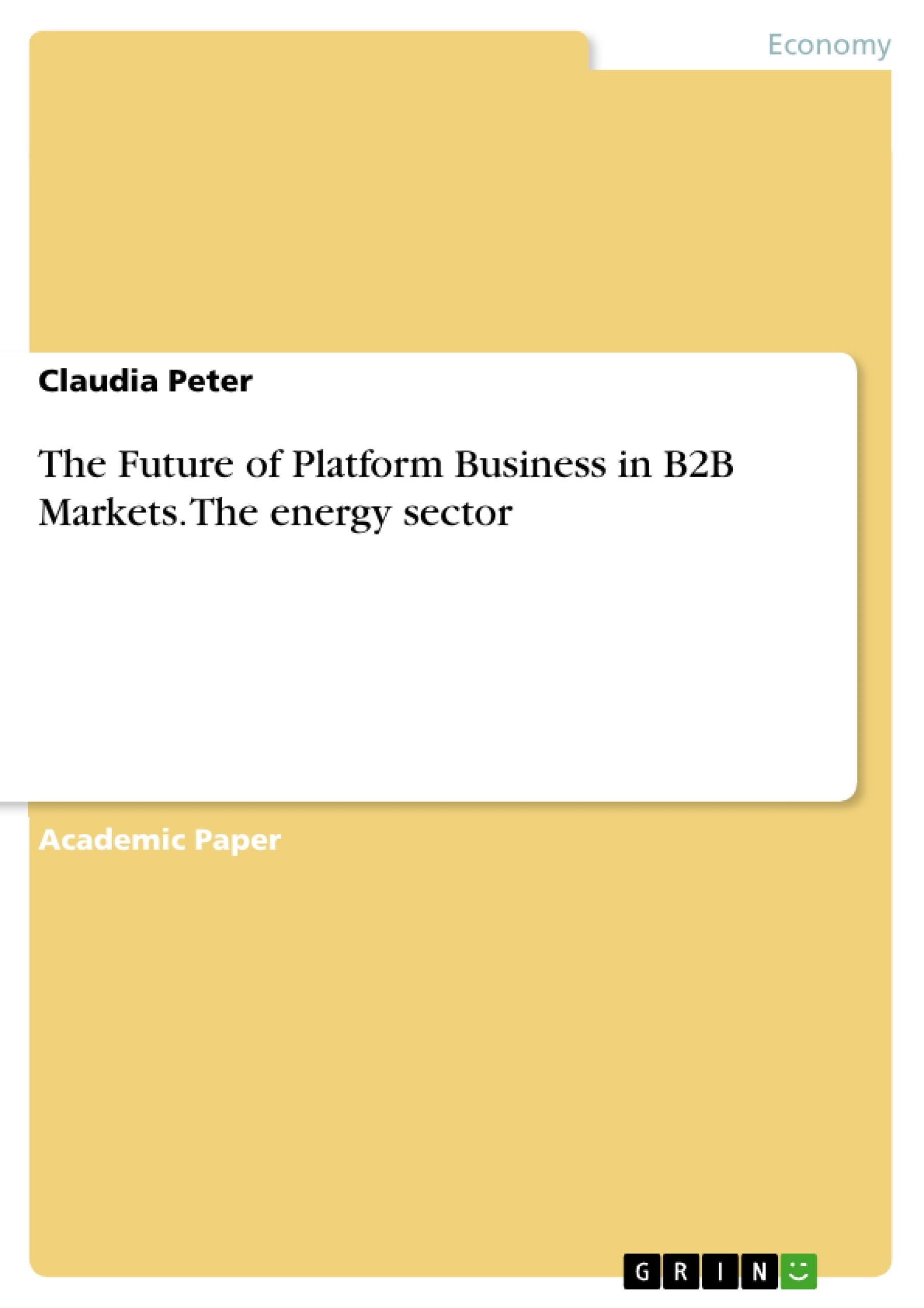This paper poses the following questions: What is the future of Platform Business in B2B markets? How is the energy industry affected and what are fields of action to catch-up or outperform in this economic area? To examine the research problem, a descriptive method based on secondary literature, reports and statistical data will be performed. Research in this area has been limited to the energy sector with an in depth status quo. From a structure point of view, the study begins with definitions of basic terms, followed by the central chapter 'B2B Platform Business in the energy sector'.
The central part is divided into three sub sections, where first of all the status quo regarding B2B platform business at E.ON, one of the largest energy companies in Germany, will be examined, following by an analysis of current trends regarding B2B platform business. The third sub section discusses fields of action for future B2B platform business at E.ON. Finally, a conclusion and outlook will summarize this research. With the rapid development of the internet and digital technologies, platforms already have grown to a global phenomenon in 2016. Nowadays, the COVID-19 pandemic further accelerated the digital transformation, which led to more progress and diversification of digital platforms.
The rise of platforms like, e.g., Uber, AirBnB and Alibaba already disrupted traditional business models by connecting people, organizations and resources in an interactive way via digital technology. Through climate change in combination with digitization and new technologies, like smart meters, deep learning and a substantial stream of software platforms, the energy industry experienced massive changes due to the appearance of B2B platform businesses, such as virtual power plants or smart home platform solutions. These developments demonstrate the importance for strategic corporate management to stay up-to-date and to elaborate new B2B platform business models in order to remain profitable and competitive.
Inhaltsverzeichnis (Table of Contents)
- Introduction
- Basic Definitions
- Definition of platform
- Definition of B2B markets
- B2B platform business in the energy sector
- Status quo regarding B2B platform business at E.ON
- Analysis of current trends regarding B2B platforms
- Digitization and the energy transition trend
- Energy platform business trends
- Geographical distribution of digital platforms
- Social media platform trends for B2B marketers
- Types of business with high impact by platform developments
- Recommendations for action regarding B2B platform business for E.ON
- Conclusion and Outlook
Zielsetzung und Themenschwerpunkte (Objectives and Key Themes)
This module aims to provide an analysis of the current status quo and future trends regarding B2B platform business in the energy sector, specifically focusing on E.ON's strategies and opportunities. It aims to understand the potential of platform business models in B2B markets, particularly within the context of digitization and the energy transition.
- Definition and characteristics of platform businesses in B2B markets
- Current trends and opportunities within the energy sector, specifically for B2B platforms
- Analyzing the impact of digitization and the energy transition on B2B platform business
- Developing recommendations for action for E.ON regarding B2B platform business
- Exploring the potential of platform business models for future success in B2B markets
Zusammenfassung der Kapitel (Chapter Summaries)
- Introduction: This chapter introduces the topic of platform business in B2B markets and outlines the module's scope and objectives.
- Basic Definitions: This chapter provides clear definitions of "platform" and "B2B markets," laying the foundation for understanding the key concepts of the module.
- B2B platform business in the energy sector: This chapter explores the existing landscape of B2B platform business within the energy sector, focusing on E.ON's current status and opportunities. It analyzes trends such as digitization, energy transition, and geographical distribution of platforms.
Schlüsselwörter (Keywords)
The module revolves around the key concepts of platform business, B2B markets, the energy sector, digitization, energy transition, and E.ON's strategic opportunities within this evolving landscape.
- Arbeit zitieren
- Claudia Peter (Autor:in), 2021, The Future of Platform Business in B2B Markets. The energy sector, München, GRIN Verlag, https://www.grin.com/document/1168649



